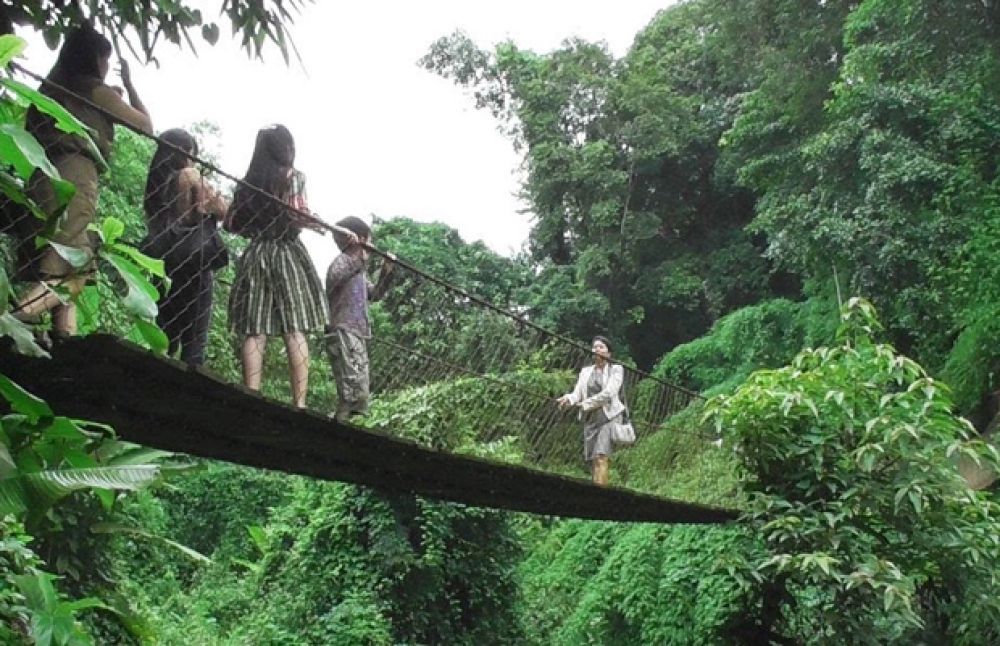Food History of Norng Kabat Forest, Ratanakiri, Cambodia
The Norng Kabat Forest in Ratanakiri, Cambodia, is known for its lush biodiversity and the indigenous communities living around it. The food history of the area reflects the surrounding environment and its indigenous cultures. Traditionally, the local populations rely on subsistence farming, fishing, and foraging for food. Their cuisine has been shaped by the natural resources available from the forest, rivers, and agricultural land.
Cambodian cuisine, in general, is characterized by a mix of flavors, with a slight tilt towards sweet, sour, and salty. It is not heavily spiced like in neighboring Thailand or India. The staples include rice and fish, closely linked to the usage of freshwater bodies around the region. Ratanakiri, being more remote, has preserved many of its traditional methods of cooking, which often include bamboo-cooked rice and dishes infused with local herbs and vegetables.
It's important to note that the traditional diet in areas like Ratanakiri can vary greatly from mainstream Cambodian cuisine, heavily influenced by the availability of local resources and the distinct cultural practices of the indigenous groups.
Top 10 Must-Try Food Dishes in Norng Kabat Forest, Ratanakiri, Cambodia
- Fish Amok - A classic Cambodian dish made with fish steamed in a banana leaf with a rich coconut milk curry (Non-Veg).
- Bai Sach Chrouk - A popular breakfast food consisting of rice and grilled pork, often served with pickled vegetables (Non-Veg).
- Khmer Red Curry - Less spicy than its Thai counterpart, this curry can be made with chicken, fish, or with just vegetables for a vegetarian option (Veg/Non-Veg).
- Banh Chao - A Khmer-style pancake filled with beansprouts, meat, and served with fresh vegetables (Veg/Non-Veg).
- Lap Khmer - Lime-marinated beef salad often served with lots of herbs, shallots, garlic, and chili (Non-Veg).
- Num Banh Chok - Also known as Khmer noodles, usually served with a fish based green curry gravy (Non-Veg).
- Grilled Eggplant - A vegetarian dish that is often flavored with minced pork on top but can be served without it (Veg/Non-Veg).
- Khmer Chicken Salad - A refreshing salad with shredded chicken, herbs, and a tangy dressing (Non-Veg).
- Fried Spring Rolls - Crispy rolls filled with vegetables and sometimes meat, served with a sweet and sour dipping sauce (Veg/Non-Veg).
- Fresh Fruit - Ratanakiri is famous for its fruits like mangosteen, rambutan, and durian, offering a sweet end to any meal (Veg).
Top Famous Restaurants in Norng Kabat Forest, Ratanakiri, Cambodia
- Terres Rouges Lodge Restaurant
Address: Banlung near Yeak Laom Lake, Ratanakiri
Famous for: Fusion cuisine blending local flavors with international dishes, serves vegetarian options (Veg/Non-Veg).
- Bamboo House
Address: In the center of Banlung, Ratanakiri
Famous for: Traditional Khmer cuisine with a variety of vegan and vegetarian dishes (Veg/Non-Veg).
- Gecko House
Address: Banlung, Ratanakiri
Famous for: Their Western and Asian fusion dishes, their vegetarian and vegan-friendly menu (Veg/Non-Veg).
Note: The information provided here reflects the position as of the last update prior to 2023. For the latest details and dietary offerings, it’s advisable to directly contact the restaurants or seek local insights upon arrival in Ratanakiri.

